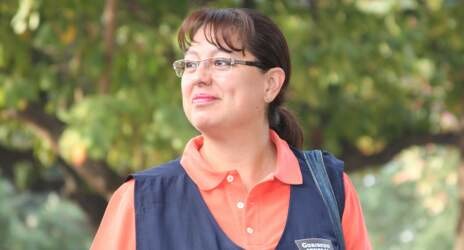
1. Tell us about your work at the Civil Protection Department
I work directly with the Civil Protection General Coordinator (CGPC) in Mexico at the national level. From this office we coordinate the Mexican National System of Civil Protection (SINAPROC).
SINAPROC’s objective is to protect individuals, society and the environment from potential risks and to address natural or man-made vulnerabilities in the short, medium and long term, through the comprehensive management of risks and the promotion of adaptation capability, relief and rehabilitation.
More specifically, I am in charge of coordinating our work on various themes, such as national security, and gender and humanitarian relief, among others, from the CGPC office.
2. How was your experience in coordinating the completion of Mexico’s chapter in the regional legal compendium?
Highly valuable. it allowed us to see gaps in our laws and procedures, identify best practices that have not yet been institutionalized yet, and to plan improvements. It created an excellent opportunity for us to take a stand on strengthening our approach in case an emergency in Mexico or abroad.
3. Why do you consider it important that Latin Americas counties complete the compendium? What is its value?
It is an ideal tool to learn and follow the applicable laws, procedures and protocols within the countries of the region, and to be able to give or receive effective humanitarian relief commensurate with the real needs of the countries during a situation of emergency or disaster
Seeing what other countries have included in the sections of the compilation will allow us to optimize human and material resources while offering “intelligent relief”.
It is often forgotten that usual donor states also have their own emergencies. By administrating relief consignments in an intelligent way, everybody wins, since unsolicited and unwanted humanitarian relief becomes a burden and an expense that do not help at all the management of the emergency.
4. Tell us about the event held in Mexico this week and your role in it.
Mexico had the honor to host the INSARAG Regional Simulation Exercise of Earthquake Response, held on Oct. 10-12 2012 in Mexico City.
I had the opportunity to participate, by including the recommendations of the IDRL Guidelines corresponding to the INSARAG simulation “injects” in coordination with Isabelle Granger from the IFRC.
5. What is your assessment of the INSARAG simulation exercise?
It was very interesting to work with national and international teams, to get to know the dynamics of something that for Mexico was unknown in a local emergency, such as the organization and the work of the UNDAC y UNETE.
Also, as a country, we were able to test our protocols and plans to see the good things in them and identify where we still need to work in the area of coordination of these matters with the international community.
6. Why do you think that the disaster law is important?
I think that a disaster can bring out the best from people. It is in human nature to empathize with our brothers when they suffer a calamity; this happens at national level and of course at international level. But disasters can also bring out the worse from some people. This is quite bad, and even worse if the authorities allow it.
Therefore, an equilibrium must be found in addressing and managing the humanitarian relief in case of an emergency or disaster. Employing clear and ethical principles that respect affected states’ own legislation will provide a real benefit to all those who we have the honor to serve as public officials.
7. What are the steps to be followed after completing the compendium and the INSARAG exercise in Mexico?
We will continue with our analysis of the lessons we have learned to:
- Revaluate any new needs for legislation
- Set out responsibilities
- Institutionalize good practices in manuals or protocols
- Publish a set of “Guidelines for the reception, organization, distribution and consignment of relief supplies for disaster affected populations”
- Include the information in the SINAPROC Organizational Manual.